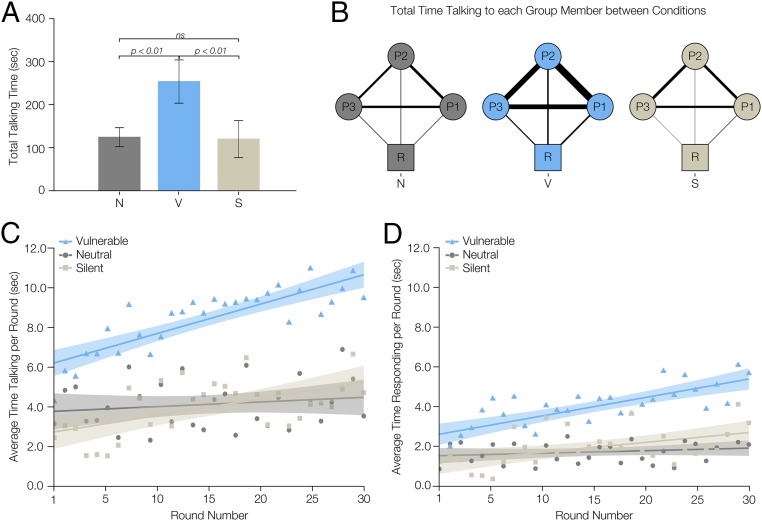Fig. 1.
Total talking time by condition. Compared to the neutral and silent conditions, human participants in the vulnerable condition spoke more, in total, to the other participants in their group, and increasingly across game rounds. In A, we see that participants in the vulnerable condition (V) spoke significantly more than participants in either the neutral (N) or silent (S) condition (n = 153 participants). In B, the line widths represent the amount of talking by human participants toward their teammates who are connected by the line, in seconds (summed across all groups within a condition (n = 153 participants)). R = robot; P1, P2, and P3 = human participants, in their relative positions around the table. In C and D, the shaded area around each line represents a 95% confidence interval (n = 4,590 rounds); the dots represent the condition average for that round. In C, the vulnerable condition has more talking in every round, and the slope (i.e., the rate of increase in talking per round, across rounds) is higher than the neutral condition (but indistinguishable from the silent condition). In D we see that, compared to the neutral condition, those in the vulnerable condition respond more over time to their fellow human group members (n = 4,590 rounds).

